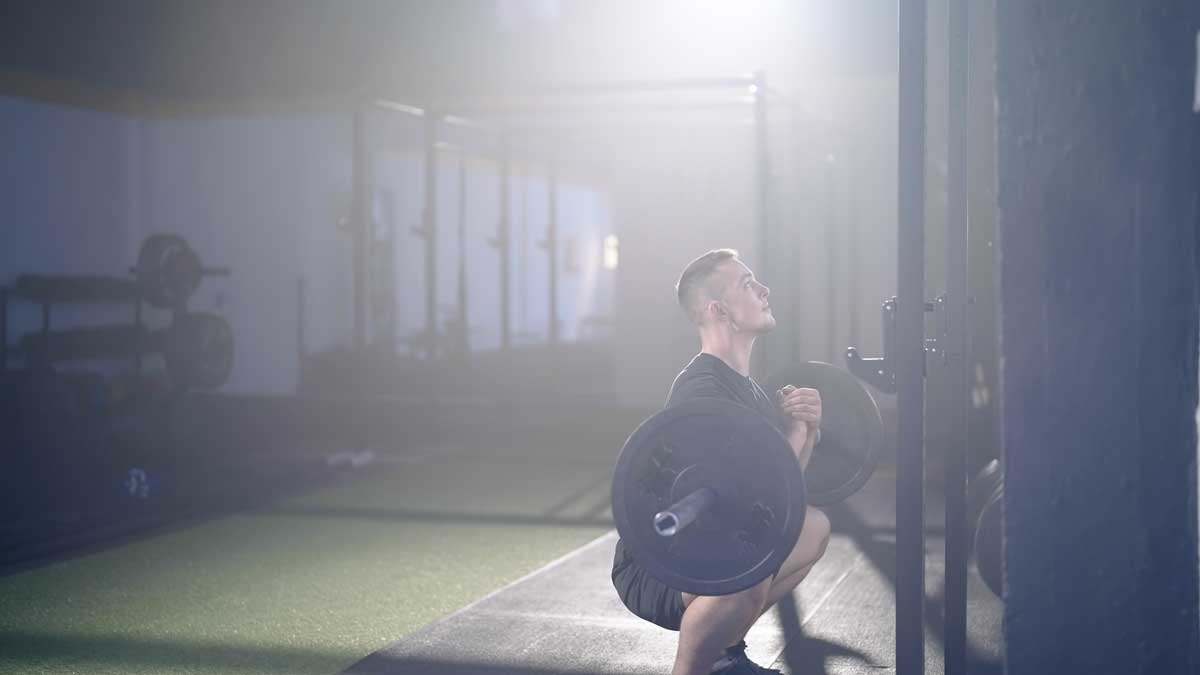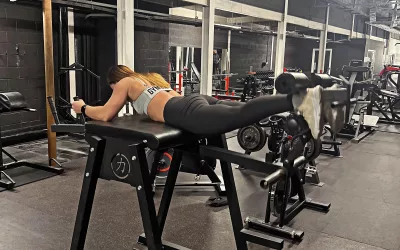How To Zercher Squat: One Exercise To Rule Them All
TOPIC: Exercise guides | Strength & Conditioning
We all want that golden ticket. The one-size-fits-all exercise and perfect program. You know – the one that makes us look like the Hulk as long as we follow that program to the T.
Well folks, that all sounds great. But in reality, we know there is no one-size-fits-all exercise, program, food, or supplement… PERIOD.
However, I have a secret weapon exercise that will get us really close; it has a lot of bang for its buck. It builds massive quads, big glutes, a wide back, and some awesome biceps. Exactly what every athlete needs.

Written By
RYAN Leibreich
Ryan is the Director of strength and conditioning at Pro Performance RX In Morgantown, West Virginia. Ryan has been working in the private sector with hundreds of youth athletes for years. His philosophy is to never stop learning, growing and adapting. To connect further with Ryan reach out to [email protected]
Website
Programs

Meet the Zercher Squat
What an exercise! It almost sounds mythical. I would say that outside of most strength and conditioning coaches and the athletes we implemented it with, very few people have heard of a Zercher Squat or know what is.
The Zercher Squat is a heck of an exercise: you hold a barbell in the crease of your arms and squat up and down. What makes it so great? This movement has a lot of details hidden in it for athletes to make major gains:
1. Tension: It creates and teaches you to generate a lot of tension throughout your body. We need to learn how to brace and squeeze. Due to the bar’s placement, we subconsciously, or naturally, must contract all the right places.
2. Toughness/Grit: I’m not going to lie – this movement doesn’t always feel great. Many athletes may need to wrap some form of padding around the bar for a while. That’s just the cost of admission though. The mental fortitude you need to perform the exercise will pay off.
3. Safety: It is very hard to load this exercise to the point of increasing an athlete’s risk of injury. Also, if the athlete gets in trouble, they can just bail by dumping the bar out in front of them. No spotters needed.
4. Mobility: We struggle with many lifting movements due to not being mobile enough to access the correct positions. The Zercher doesn’t require much mobility, and mimics natural movement, making it a good fit for the majority of the athletic population.
Any drawbacks? It can be awkward, but it’s well worth it.
How to Perform a Zercher Squat
1. Set the rack up just below your elbow
2. Put the bar in the crease of your elbows and keep them tight to your sides
4. Squeeze your hands together or have palms facing the ceiling
5. Get your hips under the bar, grab a big belly breath and stand it up from the rack
6. Take a couple steps back, settle the bar, and grab more air if you can to brace
7. Squat down until your elbows touch your thighs or fall in between
8. Stand up. Repeat and get massively athletic.
No Rack? No problem. You can perform a Zercher deadlift with the bar resting on the floor. You can also do a conventional deadlift it, then let the bar rest on your knees, scoop it up at the elbow crease, and go right into your squats. Don’t forget to try Zercher carries for some serious core work.
Zercher Squat From Rack
Deadlift to Zercher Squat
Zercher Deadlift to Zercher Squat
When to Program the Zercher Squat
Add Zerchers as an alternative to any of your current main squat movements. They’re relatively interchangeable for volume and intensity as well. Try changing your program’s back squat to Zercher squats for the next block and see what kind of weight you can handle.
Train strong!
– Ryan
Find Your Perfect Training Plan
Sometimes all you need to reach your destination on your fitness journey is an expert guide. Look no further, we've got you covered. Browse from thousands of programs for any goal and every type of athlete.
Try any programming subscription FREE for 7 days!
Related Articles
You May Also Like...
The Ultimate Guide to Lunges: Queen of all Glute Exercises
Your glutes are the largest muscle group in your body. They’re responsible for almost everything your legs do—walking, running, jumping, squatting, lunging, and just standing upright. As far as moving through space goes, strong glutes are the bedrock of overall...
A Beginner’s Guide to Steel Mace Training
Think you’ve mastered kettlebells? Meet the steel mace — the brutal, offset weapon that forces your body into three-dimensional stability, grip work, and rotational strength. Ancient tool. Modern performance.Written Byjesse grund Jesse Grund’s passion is simple: coach...
What’s a Reverse Hyper & Why Should You Use It?
Have you seen people on that weird machine, kicking back with both legs like some kind of superhero donkey?? The reverse hyperextension is actually an extremely useful movement for building posterior chain strength, and it pays to understand it.Written Byfred ormerod...
The Ultimate Guide to Lunges: Queen of all Glute Exercises
Your glutes are the largest muscle group in your body. They’re responsible for almost everything your legs do—walking, running, jumping, squatting, lunging, and just standing upright. As far as moving through space goes, strong glutes are the bedrock of overall...
A Beginner’s Guide to Steel Mace Training
Author: Jesse Grund
Mace training will make you a better mover without it’s not confining you to a fixed space or predetermined range of motion. Second, it’s an offset load with 80 to 90 percent of the weight in the head. You’re also constantly having to resist rotation, which creates greater core engagement.

Want more training content?
Subscribe
For Coaches
For Athletes
About
Support
Training Lab
Access the latest articles, reviews, and case studies from the top strength and conditioning minds in the TH Training Lab!
Made with love, sweat, protein isolate and hard work in Denver, CO
© 2024 TrainHeroic, Inc. All rights reserved.





